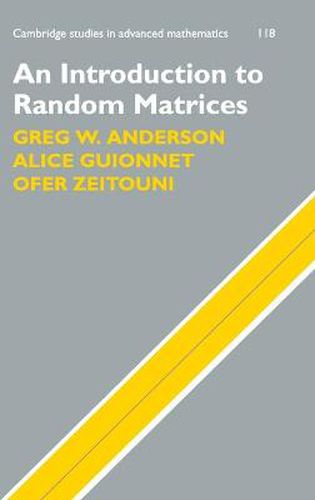Readings Newsletter
Become a Readings Member to make your shopping experience even easier.
Sign in or sign up for free!
You’re not far away from qualifying for FREE standard shipping within Australia
You’ve qualified for FREE standard shipping within Australia
The cart is loading…






The theory of random matrices plays an important role in many areas of pure mathematics and employs a variety of sophisticated mathematical tools (analytical, probabilistic and combinatorial). This diverse array of tools, while attesting to the vitality of the field, presents several formidable obstacles to the newcomer, and even the expert probabilist. This rigorous introduction to the basic theory is sufficiently self-contained to be accessible to graduate students in mathematics or related sciences, who have mastered probability theory at the graduate level, but have not necessarily been exposed to advanced notions of functional analysis, algebra or geometry. Useful background material is collected in the appendices and exercises are also included throughout to test the reader’s understanding. Enumerative techniques, stochastic analysis, large deviations, concentration inequalities, disintegration and Lie algebras all are introduced in the text, which will enable readers to approach the research literature with confidence.
$9.00 standard shipping within Australia
FREE standard shipping within Australia for orders over $100.00
Express & International shipping calculated at checkout
The theory of random matrices plays an important role in many areas of pure mathematics and employs a variety of sophisticated mathematical tools (analytical, probabilistic and combinatorial). This diverse array of tools, while attesting to the vitality of the field, presents several formidable obstacles to the newcomer, and even the expert probabilist. This rigorous introduction to the basic theory is sufficiently self-contained to be accessible to graduate students in mathematics or related sciences, who have mastered probability theory at the graduate level, but have not necessarily been exposed to advanced notions of functional analysis, algebra or geometry. Useful background material is collected in the appendices and exercises are also included throughout to test the reader’s understanding. Enumerative techniques, stochastic analysis, large deviations, concentration inequalities, disintegration and Lie algebras all are introduced in the text, which will enable readers to approach the research literature with confidence.